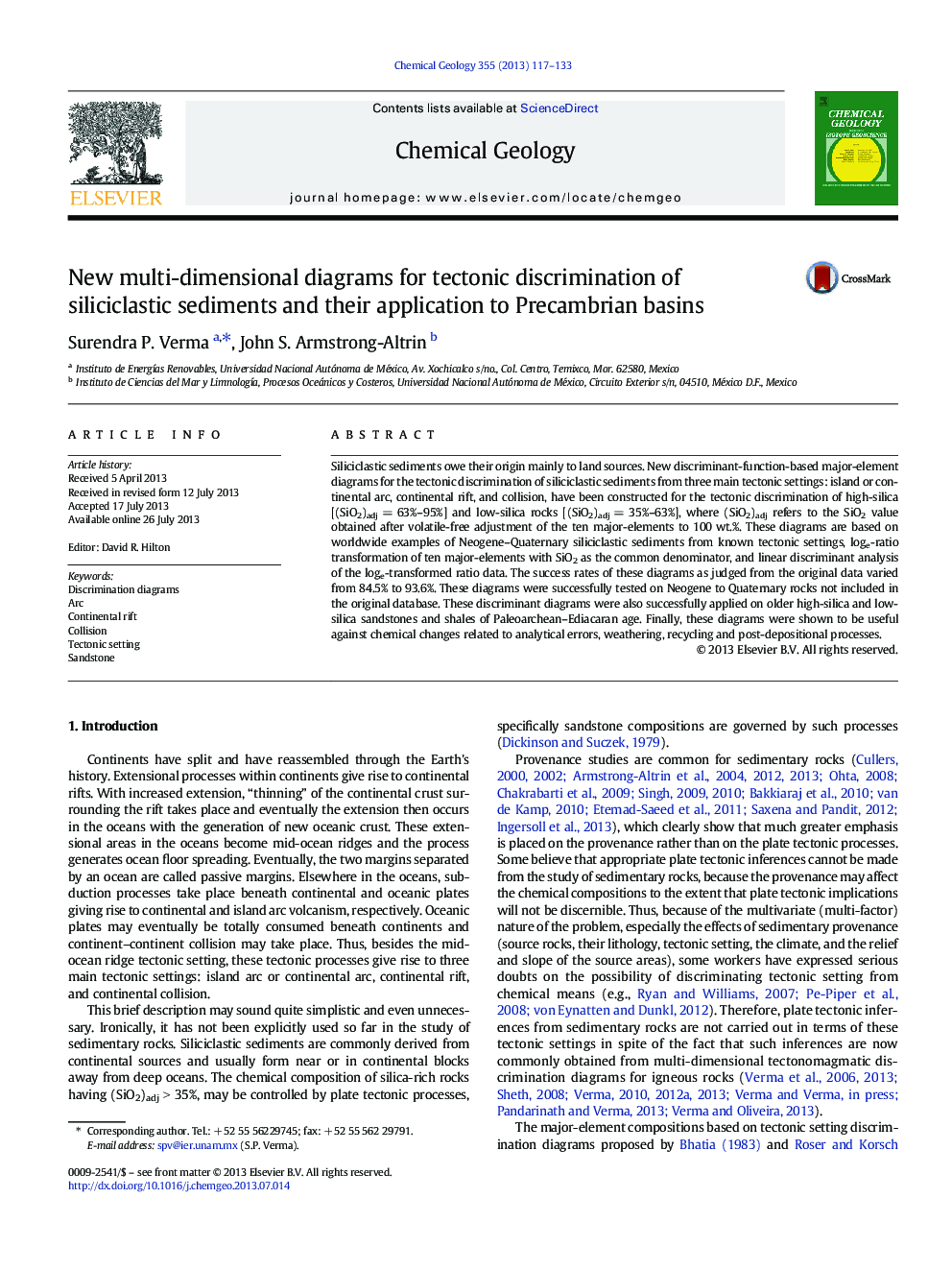| Article ID | Journal | Published Year | Pages | File Type |
|---|---|---|---|---|
| 6436795 | Chemical Geology | 2013 | 17 Pages |
â¢We present the first multi-dimensional diagrams for silicic sedimentary rocks.â¢These are the first diagrams for discrimination of three tectonic settings.â¢These diagrams are based on coherent statistical treatment of compositional data.â¢Only major elements are required for their use in deciphering tectonic setting.â¢The existing diagrams do not perform well and should be replaced by these new ones.
Siliciclastic sediments owe their origin mainly to land sources. New discriminant-function-based major-element diagrams for the tectonic discrimination of siliciclastic sediments from three main tectonic settings: island or continental arc, continental rift, and collision, have been constructed for the tectonic discrimination of high-silica [(SiO2)adj = 63%-95%] and low-silica rocks [(SiO2)adj = 35%-63%], where (SiO2)adj refers to the SiO2 value obtained after volatile-free adjustment of the ten major-elements to 100 wt.%. These diagrams are based on worldwide examples of Neogene-Quaternary siliciclastic sediments from known tectonic settings, loge-ratio transformation of ten major-elements with SiO2 as the common denominator, and linear discriminant analysis of the loge-transformed ratio data. The success rates of these diagrams as judged from the original data varied from 84.5% to 93.6%. These diagrams were successfully tested on Neogene to Quaternary rocks not included in the original database. These discriminant diagrams were also successfully applied on older high-silica and low-silica sandstones and shales of Paleoarchean-Ediacaran age. Finally, these diagrams were shown to be useful against chemical changes related to analytical errors, weathering, recycling and post-depositional processes.
Graphical abstractDownload full-size image
